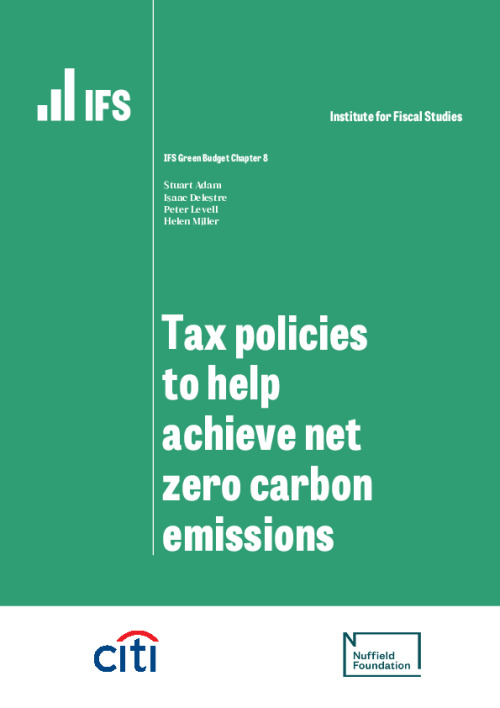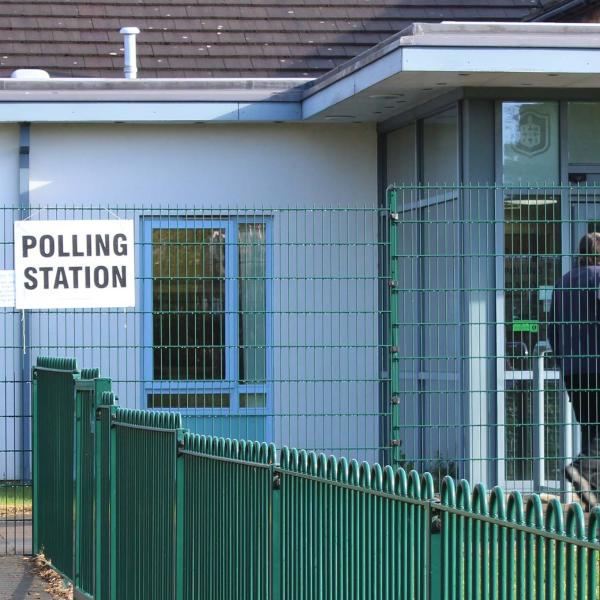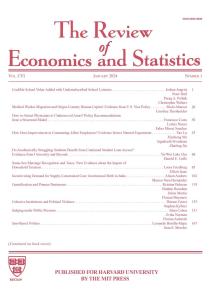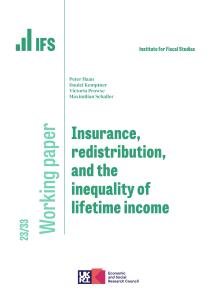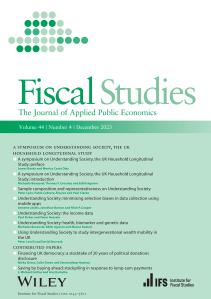The UK is legally committed to reducing the net greenhouse gas emissions that arise from UK-based activities to zero by 2050. Achieving that target will require large shifts away from emissions-intensive activity from both consumers and producers.
The most striking feature of policy in this area is the sheer number of taxes, levies and subsidies that have been put in place to try to reduce greenhouse gas emissions. Well-intentioned as these policies may be, the patchwork approach of successive governments has resulted in wildly inconsistent incentives to reduce emissions. Overall tax rates on emissions vary dramatically, including by the source of the emissions and the type of end user. Setting highly uneven incentives is an inefficient way to reduce emissions and is making the transition to net zero more costly than it needs to be.
In this chapter, we set out the progress the UK has made so far in achieving net zero, before turning to look in detail at the incentives created by policy in four key sectors: energy, aviation, transport fuels and waste management. We consider the distributional challenges associated with net zero, asking which households are likely to bear the greatest burden as the UK seeks to decarbonise. We conclude with a discussion of some of the policy options faced by the Chancellor.
Implicit tax rates on greenhouse gas emissions in the energy market, by end user (2021–22)
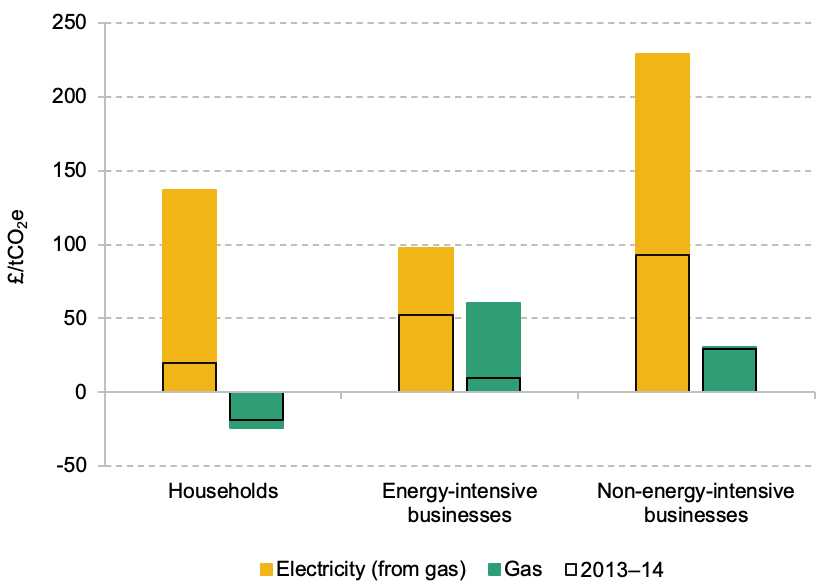
Source: Figure 8.5 in Chapter 8.
Key findings
- Greenhouse gas emissions produced on UK soil fell 38% between 1990 and 2018 – the fastest per-capita reduction in the G7. Over half of the reduction came from electricity getting cleaner. Emissions from international aviation more than doubled over this period.
- Emissions reductions will have to accelerate to reach the net zero target. Emissions fell by an average of 1.4% of 1990 levels per year between 1990 and 2018. They will need to fall by an average of 3.1% of 2018 levels per year from 2018 to reach net zero in 2050. This will be difficult; many low-cost opportunities to reduce emissions have already been exploited.
- The net zero target is based on emissions produced in the UK. But consumption emissions are 37% higher than production emissions and have fallen by less (29%) since 1990.
- There are many policies that implicitly place a tax on some greenhouse gas emissions. Overall tax rates on emissions vary wildly, including by the source of the emissions and the type of end user. The incentives to cut emissions are therefore highly uneven. Electricity and road fuel are taxed relatively heavily per tonne of CO2 equivalent emissions, while emissions from households’ gas use and expensive personal flights are effectively subsidised relative to other forms of consumption. This makes reducing carbon emissions more costly than it needs to be.
- Renewable electricity generators receive large subsidies, paid for through substantially higher electricity prices. The government is choosing to support specific emerging technologies, even when more cost-effective options are currently available. This approach may pay off in the long run but entails risks.
- The spending of the highest-income tenth of households has a carbon footprint which is, on average, more than three times as large as that of the lowest-income tenth of households. However, the spending of poorer households is more carbon-intensive, meaning that, to the extent that policies which put a cost on emitting greenhouse gases are passed on to consumers, these costs will tend to take up a bigger share of poorer households’ budgets. These policies include ones that affect the price of electricity (which has increased by over three-quarters in real terms in the past 15 years) and gas.
- There are clear distributional concerns with increasing the cost of emissions. There are ways to compensate low-income households, but some households are difficult to reach: even among low-income households, there is large variation in energy use, for example.
- The decision to focus energy efficiency subsidies on low-income and vulnerable households in 2013 led to a collapse in delivery of insulation projects through government schemes. When combined with the effective subsidy for domestic gas consumption, this gives most households weak incentives to improve their energy efficiency. Recent attempts at more general energy efficiency schemes have been short-lived and ineffective.
- International collaboration would help the UK reach its net zero goal. Without it, it would be harder to apply carbon prices to international aviation. And it is difficult to see how abatement incentives can be increased for energy-intensive businesses without something – such as a carbon border tax – to tackle the risk they will relocate to countries with looser environmental policies. Seeking and facilitating international policy agreement should be a clear focus of the UK government’s efforts.
This analysis was funded by the Nuffield Foundation as an early output of the 2021 IFS Green Budget.
The Nuffield Foundation is an independent charitable trust with a mission to advance educational opportunity and social well-being. It funds research that informs social policy, primarily in Education, Welfare and Justice. It also provides opportunities for young people to develop skills and confidence in science and research. The Foundation is the founder and co-funder of the Nuffield Council on Bioethics, the Nuffield Family Justice Observatory and the Ada Lovelace Institute. www.nuffieldfoundation.org | @NuffieldFound
